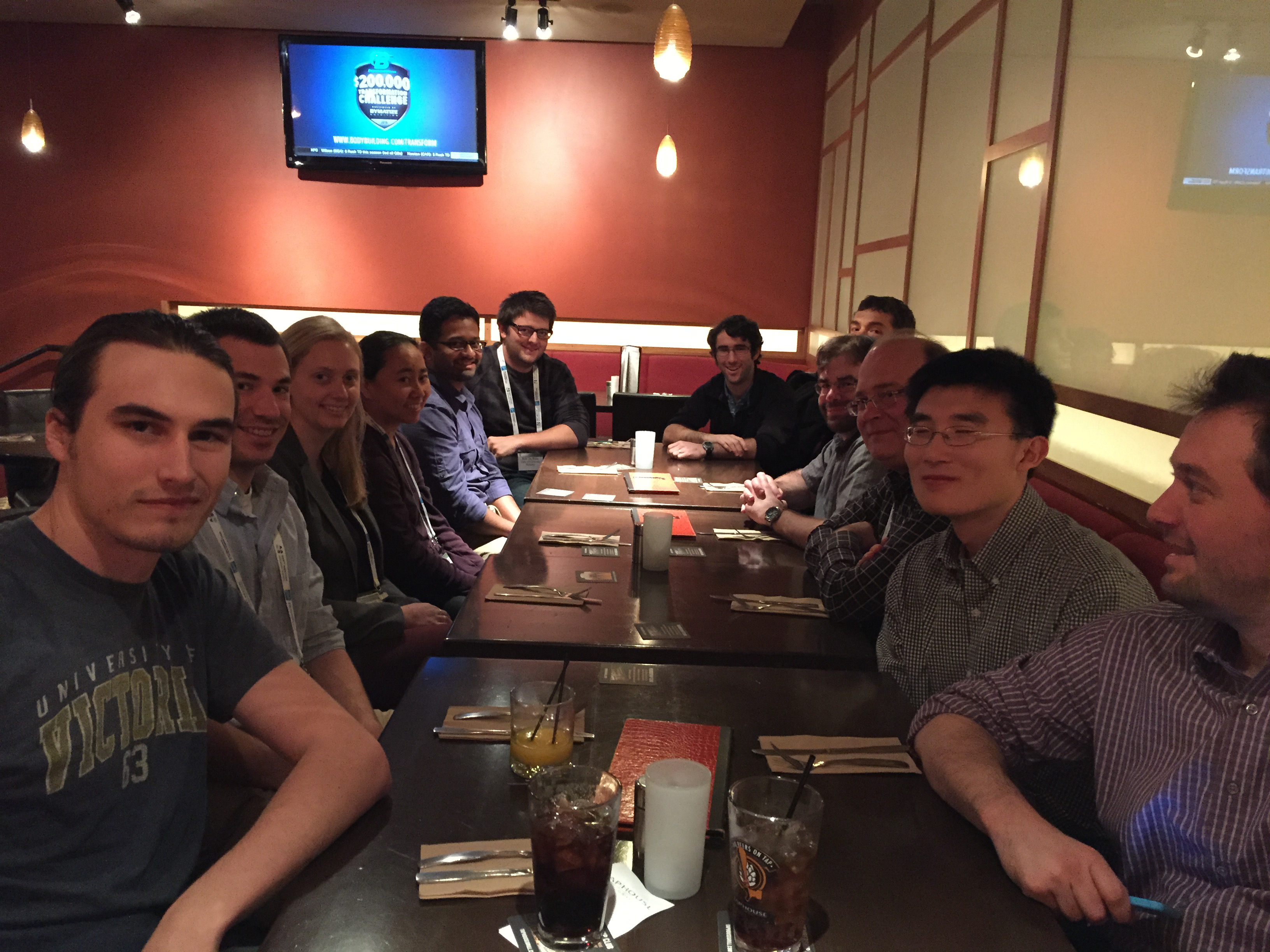Hello from AAS!

The Gemini Planet Imager Produces Stunning Observations In Its First Year
January 7, 2015
Debris Disks: Searching for Dust to Find Planets
March 4, 2015Happy new year, Internet! I’m starting off the year at the 225th meeting of the American Astronomical Society. It’s an annual conference where all the professional astronomers in the United States get together and talk about space! There’s been some really cool presentations, including the discovery of Earth-sized planets in possibly habitable orbits around other stars by Kepler. Sounds pretty cool right?
A subset of the GPI team was here for the AAS. We gave an update on the GPI Exoplanet Survey, presented posters on debris disks and exoplanets imaged by GPI, and even had a press conference on recent GPI results!
In addition to all the GPI results, the GPI team also had a team lunch to talk about starlight subtraction. Even with the star masked out, starlight still diffracts around the coronagraph and hides the faint exoplanets and debris disks that we are trying to see. As you might guess, starlight subtraction is a really important for GPI, especially with the kickoff of the GPI Exoplanet Survey just a couple of months ago. The content of meeting was a bit technical so I’ll spare you the summary here. It was a productive lunch though, and overall it’s been a great conference!


1 Comment
[…] Acht neue Planeten-Kandidaten in der Habitablen Zone sind unter den 554 neuen Kandidaten, die Kepler auf der AAS-Tagung verkündet hat und die die Gesamtzahl auf 4175 bringen: Darunter ist mit KOI 5737.01 auch der erste, der genau so viel Energie wie die Erde von der Sonne von seinem Stern bekommt, bei dem es sich wiederum um einen mit der Temperatur der Sonne handelt. Das Herantasten an eine “zweite Erde” geht weiter, zumal die neuen Kandidaten überwiegend klein sind und lange Umlaufzeiten haben – die einfachen fand Kepler natürlich schon vorher. Auch sind inzwischen über 1000 Kandidaten validiert, darunter ein paar ebenfalls in der HZ: weitere Grafiken hier und hier, Press Releases hier und hier und Artikel hier, hier, hier, hier, hier und hier. Ebenfalls berichtet wurde über 1 Mio. Klassifikationen der Disk Detectives und 747 Funde, die nun weiter untersucht werden, und erste Wissenschaft mit dem Gemini Planet Imager, der seit November 2014 in regulärem Einsatz ist. [21:25 MEZ – Ende. NACHTRÄGE: zu den Kepler-Planeten Science@NASA und weitere Artikel hier (mehr), hier, hier, hier, hier, hier, hier, hier, hier, hier, hier, hier, hier, hier, hier und hier und zum Gemini Planet Imager hier und hier] […]